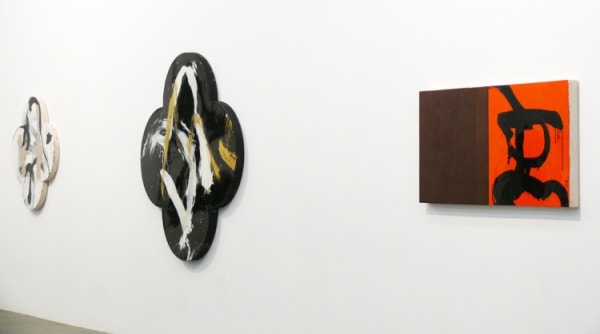Full Fathom Five: Max Gimblett
Max Gimblett is one of few New Zealander's to exhibit at the Guggenheim Museum, New York City. His recent inclusion in The Third Mind is milestone in recent New Zealand art history is directly followed by his exhibition full fathom five at Gow Langsford Gallery. The exhibition presents a collection of new paintings in his signature style of luscious surfaces, shaped canvases and fluid brushwork.
His recent works are fueled by what Gimblett refers to as an awakening of Western culture towards Asia, Asian art and the ideas synonymous with its culture and history. Gimblett’s study of Jungian psychology, Asian traditions and art-making practices began in the 1960s and has remained constant throughout his career. It is through the practice of Zen calligraphy that Gimblett conceives his spontaneous, “all mind/no mind” gestures. He responds instinctively and seemingly mercilessly to the canvas, creating intense gestural brush strokes. His engagement with Buddhism gives such mark making techniques a paradoxical reading as they become both a unique impression left by the artist, and egoless.
full fathom five takes its title from Shakespeare’s The Tempestand relates to the “spiritual in art”, to which Gimblett gives paramount importance. The ideas of rebirth and spiritual symbolism including the mystery of the father can be seen in the reflected light on the surfaces and gilded edges of recent works. These create halos of light signifying an aura and spiritual sense of being.
Alongside his Eastern influences, Gimblett is acutely aware of the Western traditions in which his work is created and aligns his practices also with American art history, most notably painters Jackson Pollock and William de Kooning.
This exhibition runs through May and is a must see exhibition of an exquisite collection of new works by a visionary painter.







